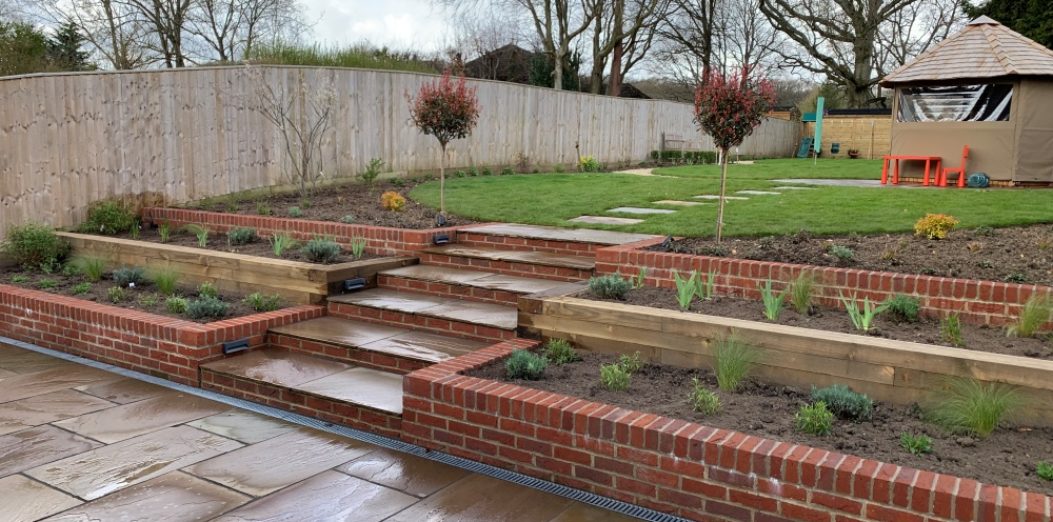How to look after your new plants

For many people, the prospect of having lots of new plants to care for and nurture is a slightly scary one. It’s normally the fact that these things are living organisms that tends to unnerve people. In a similar way to having a new lawn laid, people sense there is far greater potential for damage than there would be, say, for their new patio!!
But really, all that is required is a big bundle of common sense, combined with a little bit of plant knowledge. This article should help you get started with that.
Most plants are pretty robust. BUT, most plants do need:
Watering
It is difficult to say precisely how much water to give a plant (they all vary!), but during the first growing season, you need to give plants enough water to get down to the plant’s root system. This applies even to plants that will, when established, thrive in dry conditions.
When it is very hot, it is usually advisable to water early in the morning or later in the day, to avoid losing water to evaporating.
With big plants with large root balls, it take a lot of water to get the moisture down to the roots. One option is to install a vertical plastic pipe into the soil alongside the plant (this is best done at planting time), so that water can be directed more effectively to the roots.
As a general rule, it is better to water thoroughly, and then let soil become drier before watering again, rather than watering little and often (where much of the water will be wasted).
You may wish to make your life easier by installing some form of irrigation system (even if it is a temporarily rigged up leaky pipe system!)
A couple of things to bear in mind:
- There is a balance to be struck between watering well and turning your garden into a swamp. Do the latter, and you’ll find your plants are so wet that they just put on lots of green lanky growth, or worse still, rot.
- Keep an eye on your new plants if they were planted in the autumn. Whilst plants don’t normally need much water in winter, a long spell of cold dry winds can dry out plants completely.
Weeding
Keep the ground around the new plants as free from weeds as best as possible. Weeds are the world’s greatest competitors and will out-compete the plants for light, space, water and soil nutrients. And besides, it is nice to be able to see your new plants!
Mulching
Mulching, e.g. with bark, might be helpful in terms of limiting weed growth and conserving moisture. However, mulch does need to be used with care. The mulch itself needs to be well rotted to prevent damage to delicate stems, and so that the mulch does not take nitrogen out of the soil.
Plants that like free draining soil conditions won’t like sitting through a cold wet winter up their necks in soggy bark. Hebes, Lavenders, Phormiums, most “Mediterranean” plants and some herbaceous perennials fall into this category.
Pruning
New plants don’t normally need much pruning, although they may need a light trim to tidy after planting.
But it is important to establish a pruning regime in subsequent years (e.g. the following spring), and this is particularly the case for deciduous shrubs, which need hard pruning in spring. It is much easier to keep plants a sensible size and shape if pruned correctly from the outset, rather than trying to hack back a giant shrub which may have been planted 5 years ago and never pruned!
Supports, stakes and ties
- Some perennials will need staking; this is best done early in their growing season.
- Climbers will need tying to their support structures as they grow.
- Tree stakes / ties will need checking and adjusting periodically.
Feeding and Fertilising
As with pruning, plants don’t usually need much feeding during their first growing season, normally because the soil will have been prepared and enriched prior to planting. But the plants will benefit from a simple feed with a general and balanced fertiliser in subsequent years.
Deadheading
Ok, this is not essential, but some plants will give you a much better and longer flower display if they are regularly deadheaded – and you can do a bit of gentle pruning at the same time. Roses are a good example here.
That’s it! Anything we’ve missed? If you have anything to add, or have a question about a specific plant, please leave a comment below.